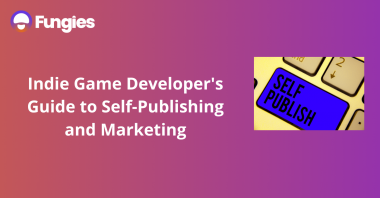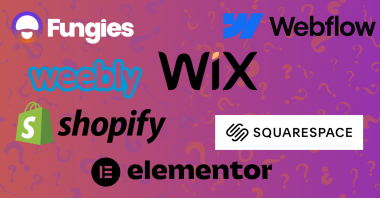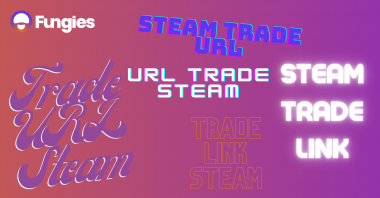In recent years, the gaming landscape has undergone a significant transformation, particularly in the indie game sector. The rise of digital platforms and online distribution channels has paved the way for independent creators to reach global audiences without the need for traditional publishing routes. With games now being played, bought, and discussed predominantly online, the digital realm has democratized the world of indie gaming, leveling the playing field for developers everywhere. No-code storefronts address the needs of indie game developers and help them build their position online.
The Crucial Role of a Solid Online Presence
For indie game developers, the virtual world isn’t just a place to sell games; it’s a platform to tell their story, connect with fans, and build a loyal community. A robust online presence isn’t a mere luxury; it’s a necessity. In an era where players often discover new games through online reviews, streams, and social media buzz, having an interactive, engaging, and professional digital storefront can make the difference between a game that thrives and one that fades into obscurity.
Why Every Indie Game Developer Needs an Online Storefront
Reach a Wider Audience
In the digital age, geographical boundaries have dissolved. By setting up an online storefront, indie game developers can tap into a vast global audience. No longer restricted to local markets or specific distribution channels, developers can showcase their creations to gamers from all corners of the world, multiplying their potential player base exponentially.
Provide a Seamless Buying Experience for Fans
Today’s gamers value convenience. With an online storefront, fans can browse, purchase, and download games with just a few clicks. This seamless buying experience, free from the hassles of physical stores or third-party platforms, ensures that players can easily access and enjoy their favorite indie games whenever the urge strikes.
Control Over Branding and Game Presentation
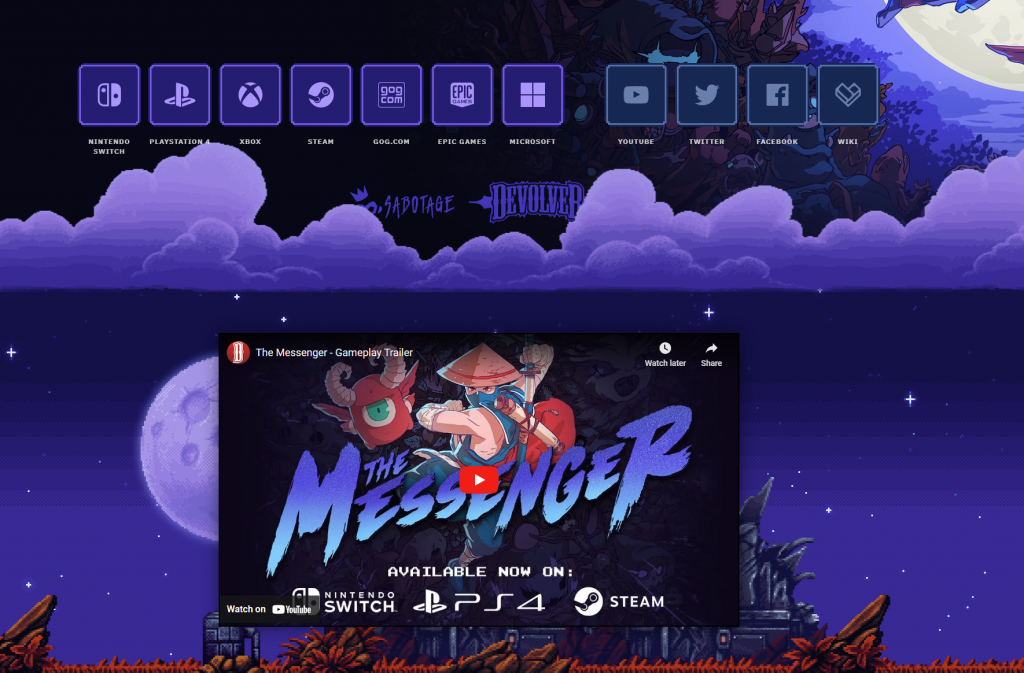
Having your own storefront means complete control over how your game is presented to the world. From the visuals and game descriptions to the pricing strategy, developers have the autonomy to shape their game’s narrative. This allows for a genuine representation, devoid of external influences, ensuring the game’s essence remains undiluted and true to the creator’s vision.
Direct Engagement with the Gaming Community

One of the most significant advantages of an online storefront is the ability to foster a direct relationship with the gaming community. Developers can receive feedback, answer queries, and engage in meaningful dialogues with their fans. This direct line of communication helps in understanding player preferences, addressing concerns promptly, and building a community that feels connected and valued.
No-Code Platforms: The Game Changer
No-Code Platforms 101
For those who might be new to the term, no-code platforms are digital tools that allow users to create functional applications or websites without writing a single line of code. These platforms offer drag-and-drop features, pre-made templates, and user-friendly interfaces that make the design and deployment processes incredibly straightforward.
The Benefits of No-Code Store-Fronts
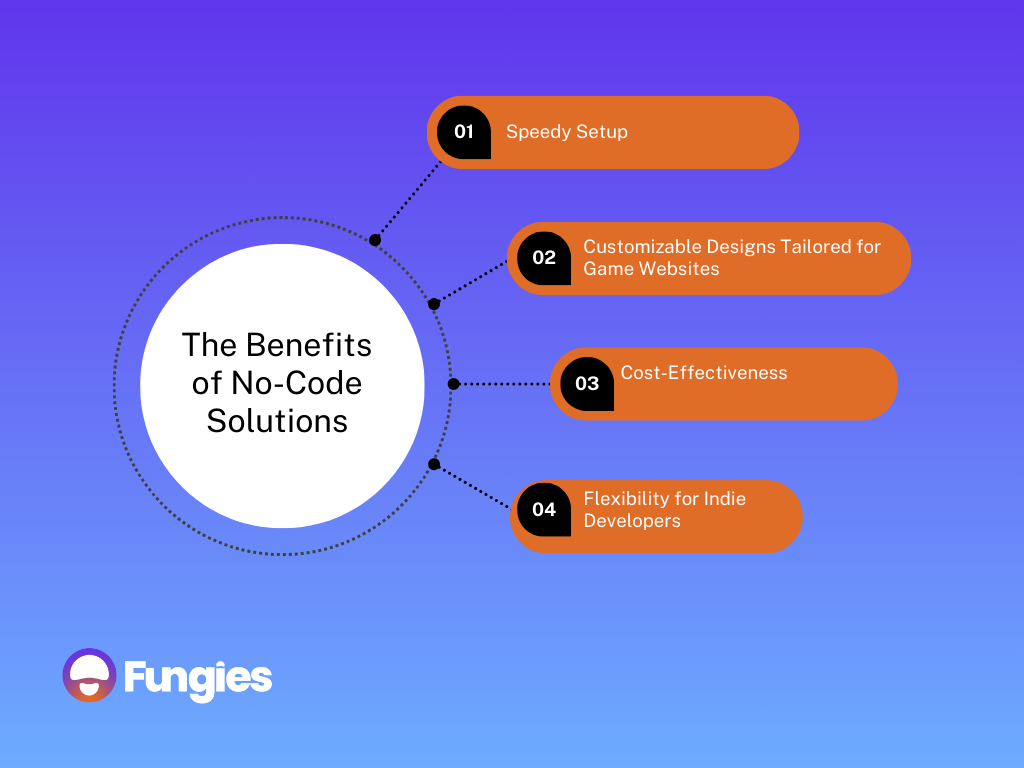
Speedy Setup
One of the standout features of no-code platforms is the rapidity with which they allow projects to be launched. Gone are the days of lengthy development cycles. With no-code solutions, indie game developers can have their game website or storefront up and running in mere hours, not weeks.
Cost-Effectiveness
Investing in traditional web development can be a costly affair, especially for indie developers working on tight budgets. No-code platforms, on the other hand, eliminate the need for hiring developers or buying expensive software. This means significant savings, allowing resources to be funneled into other vital areas like game development and marketing.
Customizable Designs Tailored for Game Websites
While no-code platforms offer ease of use, they don’t skimp on customization. With an array of templates and design options tailored specifically for game websites, developers can ensure their digital storefront truly reflects the essence of their game, all while maintaining a professional look and feel.
Flexibility for Indie Developers
The beauty of no-code platforms lies in their adaptability. Whether you’re launching a mobile game web shop, selling Steam keys, or publishing a new indie title, these platforms offer the flexibility to mold your storefront as per your evolving needs, all without the hassle of modifying complex code.
Dive into Features: Unpacking the Essentials of a Top-tier No-Code Storefronts for Games
Mobile Optimization: Harnessing the Potential of Mobile Game Web Shops
In an era where the majority of players access games via mobile, a storefront that isn’t optimized for mobile is a missed opportunity. Mobile game web shops allow developers to reach a vast audience who predominantly game on the go. Ensuring your storefront is mobile-optimized means presenting your game to a wider audience in a format they frequently use.
User-Friendly Design: The Imperative of Intuitive UX/UI for Game Websites
The experience users have when visiting your storefront can make or break their purchase decision. An intuitive UX/UI ensures that visitors can easily navigate your website, find what they’re looking for, and make purchases with ease. For game websites, this is particularly crucial as fans are often eager to dive straight into the gameplay. A seamless interface ensures they can do just that without any hindrance.
Direct Integrations: From Selling Steam Keys to Publishing Steam Games
One of the key strengths of a modern no-code storefront is its ability to integrate directly with popular platforms. Developers can effortlessly sell Steam keys, publish their creations on Steam, and manage other related tasks right from their dashboard. This reduces the hassle of managing multiple platforms and offers a centralized location for all game-related transactions.
Web3 Compatibility: Embracing the Future of the Gaming World
Web3, a term often associated with the decentralized internet, has been making waves in the gaming community. By ensuring your no-code storefront is Web3 compatible, you not only future-proof your online presence but also open doors to features such as cryptocurrency transactions and decentralized gaming experiences. As the gaming world evolves, staying abreast with technologies like Web3 becomes pivotal for indie developers.
Designing Your Indie Game Website with No-Code Builders
A Walkthrough to Crafting a Captivating Game Website with No-Code Storefronts
Starting with a no-code builder can be both exciting and daunting. Fortunately, website builder games guide developers through a step-by-step process, ensuring even those without a design background can create captivating game websites. From selecting a theme to dragging and dropping various elements, these tools make website creation intuitive and fun.
Key Design Ingredients: Beyond Just Looks
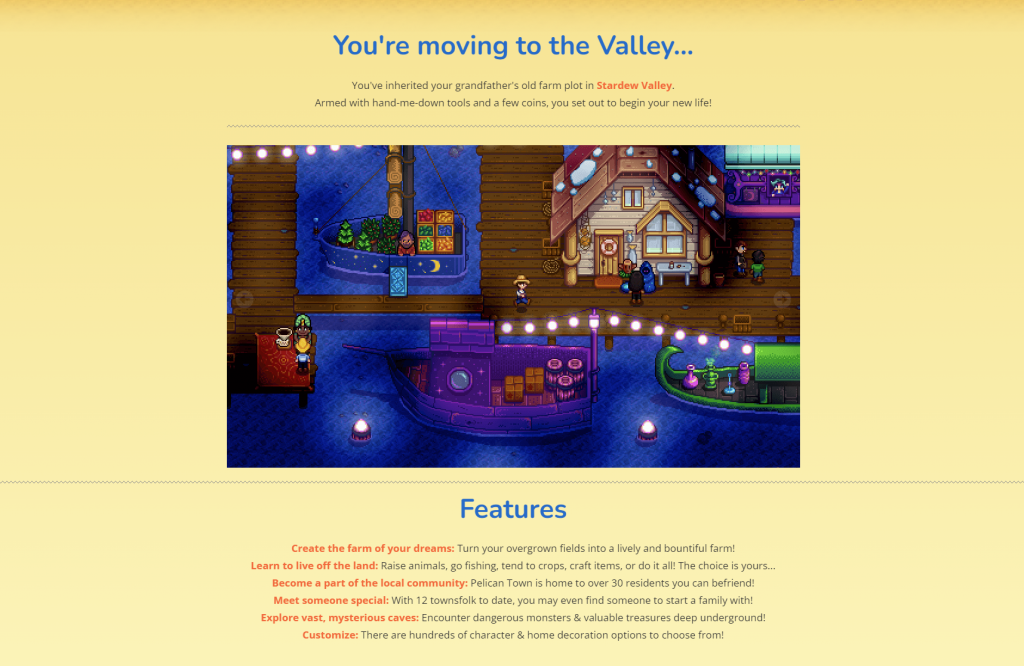
While visuals are undoubtedly essential, a successful game website goes beyond just aesthetics. Incorporate engaging game descriptions that captivate potential players and give them a glimpse of the gaming experience. Trailers play a crucial role as well: a well-crafted video can generate excitement and anticipation like no other medium. Utilizing these elements ensures your website not only looks good but resonates with your target audience.
Boosting Credibility: The Power of Social Proof

In the gaming world, peer reviews and testimonials hold immense sway. Incorporating social proof into your website can significantly impact a visitor’s buying decision. Highlighting positive reviews, showcasing testimonials from satisfied gamers, and even integrating user-generated content can elevate your website’s trustworthiness and appeal.
Conversion is King: Streamlining the Buying Journey
At the end of the day, your game website’s primary goal is to convert visitors into paying customers. This means ensuring the buying process is as seamless and hassle-free as possible. Minimize the number of clicks required to purchase, offer multiple payment methods, and provide a clear call to action. When the buying process is smooth, you maximize the chance of turning a casual visitor into a loyal fan.
Selling on Steam vs. Your Own Platform
Steam, with its iconic interface and vast digital expanse, has long been the favored haven for indie developers. The platform’s stature isn’t just built on its expansive user base but also on the promise of easy accessibility for game creators. As developers launch their creations on Steam, they tap into a pre-existing ecosystem where games, from retro gems to modern masterpieces, vie for attention. This bustling marketplace guarantees that developers’ offerings aren’t just another drop in the digital ocean, but rather, they get the spotlight they truly deserve, nestled among gaming aficionados eager for the next digital adventure.
Reaping Higher Profit Margins from Your Own Web Shop
While the allure of platforms like Steam is undeniable, the economic landscape of selling through your game webshop presents an enticing prospect. Imagine a scenario where every cent earned isn’t split with middlemen but flows directly into funding your next project. By eliminating the intermediary fees, indie developers not only see an uptick in their profit per sale but also gain more financial muscle to invest back into their passion. And it’s not just about the money; it’s about the autonomy and empowerment that comes with directing your own sales strategy, setting your price points, and reaping the full rewards of your hard work.
Fostering Direct Relationships with Gamers
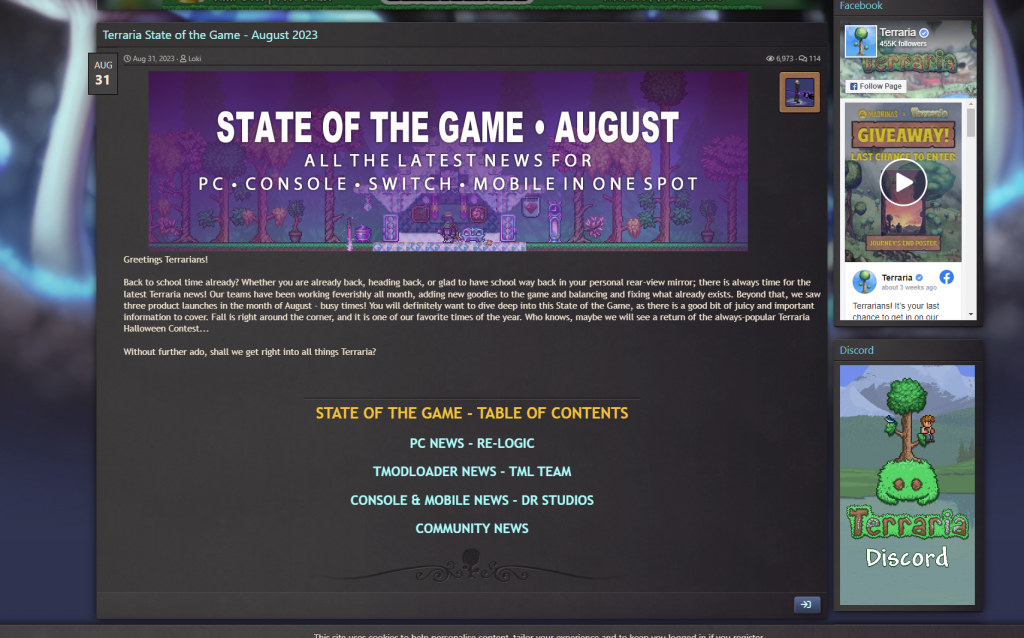
There’s an unspoken bond that forms when creators directly engage with their audience. Selling on your platform doesn’t just open a transactional channel; it ushers in an era of conversations, feedback loops, and a deep-seated community spirit. Picture a gamer not as a statistic on your sales dashboard but as a collaborator, offering insights, suggestions, and sometimes, just pure appreciation. This relationship is invaluable. Beyond sales, it fosters loyalty, encourages word-of-mouth promotions, and offers developers a goldmine of data to shape their future creations.
Unleashing Creative Promotions and Bundles
Boundaries can sometimes curb creativity. Platforms with their set rules might limit the expanse of your promotional imagination. Contrast this with the boundless playground of your own webshop. Here, your promotional strategies are limited only by your creativity. Fancy bundling up three games for a summer sale? Go right ahead. Want to offer exclusive wallpapers or soundtracks for early bird purchasers? The stage is yours. This control ensures that your marketing strategies resonate directly with what your gamers want, making every promotion an event to look forward to.
The Future is Web3: Pioneering Blockchain Integration in Indie Game Storefronts
Unpacking Web3 for Indie Developers
Web3, often considered the next phase of the internet’s evolution, is a decentralized online ecosystem powered by blockchain technology. For indie game developers, this signals a shift from traditional centralized platforms to a more open and transparent digital space. With Web3, indie creators can ensure that their digital interactions, sales, and even gameplay can be more secure, verifiable, and resistant to censorship.
Embracing Cryptocurrency Payments
One of the standout features of the Web3 realm is the ease of handling cryptocurrency transactions. By accepting cryptocurrency payments, developers not only cater to a growing crypto-savvy audience but also enjoy faster, more secure, and sometimes less expensive transaction fees. This global currency, devoid of geographical limitations, ensures that anyone, anywhere, can access and buy indie games seamlessly.
Leveraging NFTs for Exclusive Gaming Assets
NFTs, or non-fungible tokens, represent one-of-a-kind digital assets verified on a blockchain. In the gaming context, NFTs can be used to symbolize unique game items, character skins, weapons, or even in-game real estate. For players, owning an NFT can mean having a rare item that’s provably scarce. For developers, it presents an opportunity for new revenue streams and creating rare, collectible in-game assets that players might highly value.
Curating Exclusive Experiences for Crypto-Enthusiasts
Integrating blockchain into your game storefront doesn’t just stop at transactions. There’s an entire community of crypto-enthusiasts and blockchain users out there eager for exclusive content. By offering special in-game bonuses, early access, or even behind-the-scenes peeks to this audience, developers can foster a dedicated community, driving both engagement and revenue.
Charting the Future: Embracing No-Code for Indie Developers
In the dynamic world of game development, understanding and leveraging the right tools can set the course for success. No-code platforms and Web3 technology have redefined what’s possible, offering unprecedented opportunities for indie developers to reach new heights.
The Game-Changing Power of No-Code Storefronts
In an ever-evolving digital landscape, no-code storefronts have emerged as indispensable tools for indie game developers. These platforms provide a seamless bridge between a developer’s vision and the global gaming audience, eliminating technical barriers and facilitating a swift go-to-market strategy. The ease and speed with which one can create a game website, combined with customizable designs tailored for game aesthetics, underscore the game-changing potential of no-code solutions.




